"Planting Prosperity: Grow Billion Trees' Agroforestry Transformation in Satara, Maharasht
The Grow Billion Trees agroforestry project in Girvi village, Satara, is a transformative green initiative aimed at integrating sustainable agricultur Read more
Project Update 1
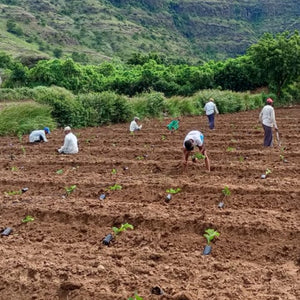
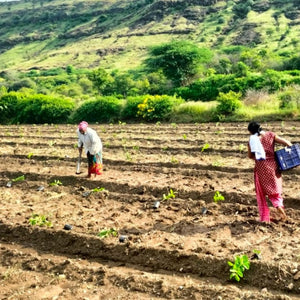
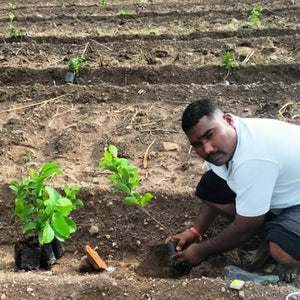

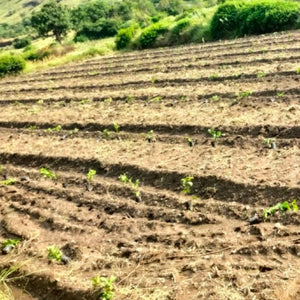
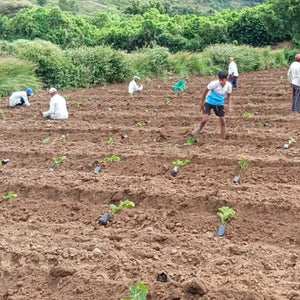

Digital Forest
Forest with 653 Trees planted
Want to plant your tree now?
Plant a Tree @ 299"Planting Prosperity: Grow Billion Trees' Agroforestry Transformation in Satara, Maharashtra"
The Grow Billion Trees agroforestry project in Girvi village, Satara, is a transformative green initiative aimed at integrating sustainable agriculture with forestation to support local farmers and ecosystems alike. By strategically planting a diverse mix of native tree species alongside traditional crops, the project boosts soil health, improves water retention, and increases crop productivity, helping farmers cultivate healthier, more resilient land.
This initiative fosters a symbiotic relationship between agriculture and forestry, providing farmers with additional income from non-timber forest products while also enhancing biodiversity. The Girvi village project contributes to climate resilience by absorbing CO₂ and creating a thriving ecosystem that supports local wildlife. With its commitment to sustainable practices, Grow Billion Trees is actively nurturing a greener future for Satara’s communities, empowering farmers through knowledge-sharing, resources, and hands-on support in sustainable land management.
Supported by corporate sponsors and individual donors, Grow Billion Trees has been able to extend its reach to multiple villages, empowering local communities to adopt eco-friendly practices that benefit both the environment and their livelihoods. This initiative not only contributes to reforestation and biodiversity but also helps mitigate climate change by increasing carbon sequestration. Through this collaborative effort, Grow Billion Trees is making a lasting impact on both the land and the people of Maharashtra.
Tree Plantation Date
Project Commencement: 7th Oct 2024
Plantation Location
Village Girvi, Phaltan, Satara, Maharashtra - 415523
Forest Type: Agroforestry
Agroforestry is an innovative land management practice that combines agriculture and forestry, integrating trees and shrubs alongside crops or pastureland. This approach creates a harmonious system that yields both economic and ecological benefits. Trees play a crucial role by enhancing soil fertility, reducing erosion, and improving water retention. They also provide shade, which can protect crops and livestock from extreme weather conditions.
Beyond agriculture, agroforestry supports biodiversity by offering habitats for various species, contributing to a more resilient ecosystem. By capturing carbon dioxide, trees help mitigate climate change, making agroforestry a valuable tool in the fight against global warming. This system also provides farmers with diversified income opportunities such as fruit, timber, and other forest products helping to boost their economic stability. With its capacity to support sustainable agriculture and environmental resilience, agroforestry stands as a powerful approach to fostering a balanced relationship between land use and ecological stewardship.
Advantages of Agroforestry
Enhanced Livelihoods and Increased Income
Agroforestry provides farmers with multiple income streams by combining tree cultivation with crops or livestock. Fruit-bearing and timber trees offer long-term financial returns, while intercrops ensure short-term earnings, reducing economic risks and improving overall livelihood stability.
Enhanced Soil Fertility and Health
Agroforestry improves soil fertility through the natural process of nutrient recycling. When trees shed leaves and other organic matter, they decompose and enrich the soil with essential nutrients, particularly nitrogen. Tree roots also help reduce soil compaction, allowing crops to access water and nutrients more effectively. Over time, this reduces dependency on chemical fertilizers, making agriculture more sustainable and eco-friendly.
Water Retention and Erosion Control
The root systems of trees help stabilize the soil, reducing the chances of erosion due to wind and water. Trees act as a protective cover, slowing rain impact on the soil and allowing water to absorb gradually. This prevents runoff, retains soil moisture, and helps maintain groundwater levels. As a result, water availability improves for crops and communities, supporting drought resilience.
Biodiversity and Habitat Creation
Agroforestry contributes to biodiversity by creating habitats for various wildlife, including birds, insects, and small animals. Native tree species, in particular, attract local fauna and support complex ecosystems. This natural biodiversity control reduces the need for pesticides, as predator-prey dynamics are more balanced, and pollinators are readily available for crops.
Climate Change Mitigation
Trees are natural carbon sinks, absorbing carbon dioxide from the atmosphere and storing it in their biomass. Agroforestry systems sequester significant amounts of carbon, helping reduce greenhouse gases. This plays a role in global climate mitigation efforts while contributing to local microclimate regulation, which can reduce crop vulnerability to temperature extremes.
Microclimate Regulation
Trees create shade, regulate humidity, and can lower temperatures around crops, protecting them from extreme weather conditions. By stabilizing the microclimate, trees reduce the likelihood of crop stress due to excessive heat or drought. This leads to more stable crop yields and contributes to food security for local communities.
Economic Resilience and Reduced Market Risks
Agroforestry promotes resilience by decreasing farmers’ dependency on a single crop or income source. If a particular crop faces market downturns or natural challenges, farmers can rely on other products, like timber or fruits, from their agroforestry systems. This multi-crop strategy buffers against economic fluctuations, making agroforestry a sustainable economic choice.
Community Empowerment and Knowledge Transfer
Agroforestry projects, like those led by Grow Billion Trees, often involve training and workshops, empowering farmers with sustainable farming techniques. Knowledge sharing leads to community-led conservation efforts, with farmers equipped to manage resources sustainably. Through agroforestry, communities become stewards of their environment, improving long-term agricultural productivity while fostering social cohesion and environmental awareness.
Commitment by Grow Billion Trees
Grow Billion Trees is committed to driving sustainable plantation efforts, ensuring every initiative aligns with key environmental objectives and promotes long-term ecological balance. They focus on selecting native tree species that are well-adapted to local ecosystems, ensuring a higher survival rate and stronger environmental impact.
To maintain plant health and longevity, Grow Billion Trees emphasizes continuous maintenance and regular monitoring of the plantations. This approach helps ensure that each tree thrives, contributing effectively to both biodiversity and climate resilience.
Transparency is a core principle in their operations. Clients receive comprehensive reports, including geo-tagging of planted trees, survival rate updates, and ongoing progress reports. This level of openness allows clients to track the direct impact of their contributions, reinforcing trust and accountability.
Through their dedication to sustainable practices, Grow Billion Trees ensures that every plantation project leaves a lasting positive footprint on both the environment and the local communities it serves.
Summary
Grow Billion Trees' agroforestry initiative in Girvi village, Satara, merges agriculture with tree planting to create sustainable, resilient farming. This approach enhances soil health, conserves water, and provides farmers with additional income sources like fruit and timber. The project also acts as a carbon sink, supporting climate action and boosting biodiversity by providing habitats for wildlife. Through agroforestry, Grow Billion Trees supports both local livelihoods and environmental sustainability.
Trees for Corporates
Trending
Most Popular
1. Tree Plantation Drive
Imagine forests that sprout faster than your morning coffee brews! Grow Billion Trees brings large-scale tree plantation drives to life, creating green lungs in places we least expect. This initiative isn’t just about planting trees; it’s about transforming barren lands, parks, and fields into mini-forests. With every sapling, Grow Billion Trees aims to lower carbon footprints, boost oxygen production, and restore natural habitats. Through community involvement and hands-on participation, each drive educates, inspires, and builds a better future for both people and the planet. It’s proof that big change starts small—just a seedling at a time.
2. Agroforestry Benefits
Agroforestry is where farming meets forestry in a match made in green heaven. Grow Billion Trees leverages this practice to yield benefits beyond just crops and trees. Agroforestry enriches the soil, improves water retention, and offers natural pest control, reducing the need for chemicals. It’s like creating a full-service ecosystem where trees, crops, and nature work together. This method boosts biodiversity, enriches local food sources, and provides farmers with an additional income from fruits and timber, all while enhancing climate resilience. A farm with trees isn’t just a farm—it’s a thriving ecosystem.
3. Carbon Sequestration and Climate Action
trees absorb CO2, purify the air, and reduce atmospheric carbon. This initiative aligns with global climate action goals, making a significant dent in greenhouse gases. It’s a big step toward a cooler planet—one sapling at a time.
4. Community Empowerment Through Green Jobs
Tree planting isn’t just for Mother Nature; it’s also a source of livelihood for local communities. Through Grow Billion Trees, tree plantations create green jobs, helping locals earn a steady income. From planting and maintaining to harvesting fruits and timber, this initiative uplifts communities economically. In rural areas, this approach diversifies incomes and empowers individuals to be part of sustainable change. Every tree planted is more than a leaf on a branch; it’s a stepping stone toward financial security and community resilience.
5. Sustainable Land Use Practices
Grow Billion Trees doesn’t just plant trees; they plant knowledge. By introducing sustainable land use practices, this initiative turns barren land into productive, eco-friendly landscapes. Trees enhance soil quality, reduce erosion, and improve water retention. The approach teaches communities to make the most of their land without depleting its resources. Sustainable land use practices mean a healthy planet and productive lands that will serve generations to come. It’s a lesson in making the Earth work smarter, not harder.
6. Reforestation and Biodiversity
Biodiversity is the buzzword in conservation, and reforestation is key. Grow Billion Trees is not just reforesting but also reviving ecosystems. Planting diverse, native species ensures the return of birds, insects, and other wildlife. It’s like creating a bustling city, but in nature. With each tree, this initiative rebuilds natural habitats, preserves endangered species, and restores ecosystem balance. The biodiversity benefits go beyond the aesthetic—more diversity means healthier forests and stronger ecosystems.
7. Soil Health and Fertility
It’s what’s beneath the surface that counts. Grow Billion Trees’ agroforestry initiatives improve soil health and fertility, an often overlooked benefit of tree planting. Tree roots stabilize soil, prevent erosion, and enrich it with organic matter. This, in turn, benefits crops planted alongside, providing natural nutrients and reducing the need for fertilizers. Healthy soil is essential for growing food, filtering water, and supporting plant life. Agroforestry isn’t just about planting trees; it’s about growing life from the ground up.
8. Educational Outreach and Environmental Awareness
Knowledge is power, and Grow Billion Trees is all about empowering communities through education. Their tree plantation initiatives include environmental awareness programs, educating people about the importance of trees, ecosystems, and sustainability. Through workshops, seminars, and on-the-ground training, Grow Billion Trees makes environmental awareness an accessible topic. It’s more than just planting trees; it’s about planting ideas, sparking inspiration, and building a legacy of green-conscious citizens who know their impact on the planet.
FAQ
What is the mission of Grow Billion Trees?
Grow Billion Trees aims to combat climate change and enhance biodiversity through large-scale tree planting initiatives. By fostering sustainable agroforestry practices, the organization focuses on creating greener landscapes that benefit both local communities and the environment. Their mission is to plant one billion trees, promote environmental awareness, and empower communities to engage in conservation efforts.
What types of trees are planted in Grow Billion Trees initiatives?
Grow Billion Trees prioritizes planting native and diverse species that are well-suited to local ecosystems. This approach enhances biodiversity, supports wildlife habitats, and improves soil health. The focus is on selecting species that thrive in the area, ensuring a sustainable environment that provides long-term benefits for both nature and agriculture.
How can individuals get involved with Grow Billion Trees?
Individuals can get involved with Grow Billion Trees through various programs, including volunteering for tree planting events, spreading awareness, and participating in local community initiatives. They can also contribute by donating or supporting outreach programs that educate communities about the importance of trees and sustainable practices. Every contribution helps promote a greener future.
Are there any community benefits from the agroforestry initiatives?
Yes, agroforestry initiatives by Grow Billion Trees provide numerous community benefits. They enhance local livelihoods by creating jobs in tree planting, maintenance, and harvesting. Additionally, agroforestry improves food security by diversifying crop yields, enriching soil health, and promoting sustainable farming practices that support both the environment and the community’s economic growth.
How does agroforestry contribute to climate change mitigation?
Agroforestry plays a significant role in climate change mitigation by sequestering carbon dioxide through tree growth. By integrating trees into agricultural practices, Grow Billion Trees helps reduce greenhouse gas emissions, improve soil health, and enhance biodiversity. These efforts contribute to a more resilient ecosystem, enabling communities to better adapt to changing climate conditions.
What are the educational programs offered by Grow Billion Trees?
Grow Billion Trees offers a variety of educational programs aimed at raising awareness about the importance of tree planting and sustainability. These include workshops, seminars, and hands-on training for local communities, schools, and organizations. The goal is to empower individuals with knowledge about environmental conservation and encourage active participation in tree planting initiatives.
How does Grow Billion Trees ensure the survival of planted trees?
Grow Billion Trees employs several strategies to ensure the survival of planted trees. These include selecting native species that thrive in local conditions, providing adequate training for community members on tree care, and implementing monitoring systems to track the growth and health of planted trees. Ongoing community engagement plays a crucial role in maintaining these green initiatives.
What impact does Grow Billion Trees have on biodiversity?
The initiatives of Grow Billion Trees significantly enhance biodiversity by restoring degraded landscapes and creating diverse ecosystems. By planting native tree species, the organization fosters habitats for various flora and fauna, helping to stabilize local ecosystems. This biodiversity boost not only supports wildlife but also promotes a healthier environment for communities and agriculture.
What are the long-term goals of Grow Billion Trees?
Grow Billion Trees has set ambitious long-term goals, including planting one billion trees across India to combat climate change and promote sustainability. The organization aims to foster partnerships with local communities, NGOs, and governments to ensure the success of its initiatives. Ultimately, the goal is to create a greener, more sustainable future for generations to come.
How does Grow Billion Trees measure its impact?
Grow Billion Trees measures its impact through regular assessments of tree survival rates, biodiversity improvements, and community engagement levels. The organization conducts environmental impact studies to evaluate the ecological benefits of its planting initiatives. By tracking these metrics, Grow Billion Trees can continuously improve its strategies and ensure that its mission effectively contributes to environmental sustainability.
- Choosing a selection results in a full page refresh.
- Opens in a new window.












